Understanding the iPad Air 10.9 Charger: Complete Guide
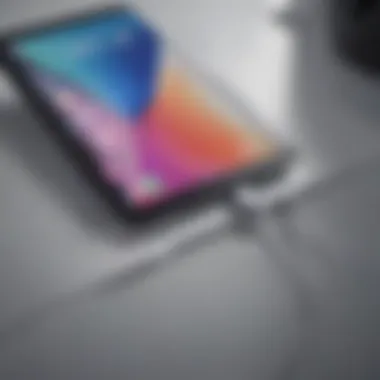
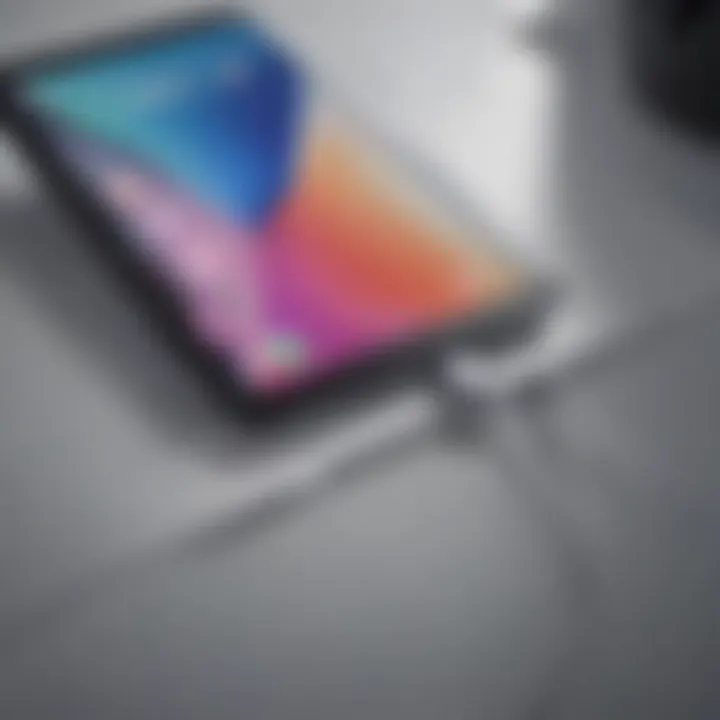
Product Overview
Preface to the Apple product being discussed
The charger for the iPad Air 10.9 is more than just a basic power supply; it reflects Apple's commitment to design and functionality. Released alongside the iPad Air 10.9, this charger is specifically tailored to meet the device's power requirements efficiently, promoting optimal performance for everyday tasks and intensive applications alike.
Key features and specifications
This charger boasts several noteworthy features:
- Power Output: The iPad Air 10.9 charger has a power output of 20 watts, which supports fast charging to keep your device powered without excessive downtime.
- USB-C Connectivity: Utilizing USB-C technology for its connector, it not only ensures a secure fit but also contributes to faster data transfer speeds if you're using it for file swapping with compatible devices.
- Compact Design: Similar to the iPad itself, the charger is lightweight and portable, making it easy to toss into your bag without adding a lot of bulk.
Design and aesthetics
With a sleek, minimalist design typical of Apple products, the charger is visually appealing. It comes in a white finish, matching the aesthetic of the iPad Air. The clean lines and lack of excessive branding enhance its modern look, allowing it to blend seamlessly in various environments.
Performance and User Experience
Performance benchmarks
When it comes to charging speeds, the iPad Air 10.9 charger does not disappoint. Users can expect a full charge in about two hours, making it viable even for users in a rush. Compared to older models, this charger is significantly faster and more efficient, thanks in part to its adaptive charging technology.
User interface and software capabilities
Although the charger itself is a hardware component, it integrates well with the device's adaptive charging features. Once connected, the iPad recognizes the power source, adjusting the charging rate to optimize battery health over time.
User experiences and feedback
Users frequently mention the convenience of carrying this charger around. Online forums like Reddit often have users sharing their thoughts, with most praising its efficiency and portability. However, some have indicated the lack of a longer cable as a minor inconvenience, especially in scenarios where outlet locations aren’t ideal.
Comparison with Previous Models or Competitors
Advancements and improvements from previous models
Compared to the charger used for the iPad Air 3, the 10.9 charger is a notable upgrade. The enhanced charging speed and USB-C connectivity are a significant leap toward future-proofing the device. Additionally, the compact size of the new charger aligns with Apple’s trend towards creating slimmer products.
Competitive analysis with other similar products
When pitted against other chargers, say those from Samsung or Anker, Apple's charger holds its own in terms of speed but often falls short in terms of cable length. Many competitors offer longer cables bundled with their chargers; this is an area where Apple might take a little note from their rivals.
Value proposition
The iPad Air 10.9 charger, while perhaps a tad pricier than some alternatives, offers reliability and efficiency that are strong arguments for consumers considering a purchase. The charger is often viewed as an investment into the overall ecosystem, ensuring compatibility with future devices as well.
Tips and Tricks
How-to guides and tutorials for optimizing the Apple product's performance
To get the most out of your charger, consider these tips:
- Avoid Using Multi-Outlet Adapters: When possible, plug it directly into a wall socket to maximize power delivery.
- Keep the Charger Clean: Dust and debris can interfere with connections; regularly wiping it down can help maintain efficiency.
Hidden features and functionalities
Though the charger is straightforward, there are a few tricks:
- Smart Charging: It adjusts the power output based on the device's battery level, ensuring longevity for the battery too.
Troubleshooting common issues
Should you face problems with charging:
- Check the cable for any signs of wear.
- Ensure the outlet is functional by testing with another device.
Latest Updates and News
Recent developments in software updates and new features
With software updates, Apple continues to enhance charging efficiency even further. Ensure that your iPad is up to date to reap the benefits of these advancements.
Industry news and rumors surrounding upcoming products
There are whispers that Apple may introduce a next-generation charger with quicker speeds and enhanced adaptivity in the future—keeping followers on their toes!


Events and announcements from Apple
Keep an eye on major product launch events, often hosted in the fall, for any announcements related to charging products as they are likely to come.
As the world moves toward more sustainable energy sources, expect to see a push from Apple for eco-friendly charging solutions.
The iPad Air 10.9 charger encompasses a blend of intelligent design, functionality, and performance that offers a solid charging experience for users.
Prologue to the iPad Air 10. Charger
When it comes to the iPad Air 10.9, having the right charger is essential, not just for powering up your device but also for optimizing its performance and longevity. Understanding the iPad Air 10.9 charger means diving into its design, specifications, and overall functionality. It’s about grasping how this relatively small piece of technology orchestrates the charging process efficiently while safeguarding your device's battery health.
Moreover, with the plethora of charging options available, knowing what you need specifically for the iPad Air 10.9 can prevent users from falling into common pitfalls, like damaging the device or compromising its battery. In a world where fast-paced technology development occurs daily, making informed choices about charging equipment becomes crucial for Apple enthusiasts and professionals alike.
Here's what we will dive into: the charging needs of the iPad Air 10.9, the importance of using the right charger, and so on.
Overview of Charging Needs
Every device has unique charging requirements, and the iPad Air 10.9 is no different. It requires a charger that can deliver power efficiently without overheating or underwhelming its performance. The Apple ecosystem encourages a user to choose chargers designed specifically for its products. The charger not only supplies the necessary voltage and amperage but also communicates with the device to optimize charging speeds.
Users should be aware of the features of the iPad Air 10.9, such as its battery capacity and processing demands, which ultimately dictate the charging speed and efficiency. A deeper understanding of these needs helps users appreciate why specific chargers exist for their devices.
Importance of Using the Right Charger
Selecting the correct charger for the iPad Air 10.9 cannot be understated. Using the wrong charger can lead to a host of issues, including slower charging, overheating, and in severe cases, battery damage. It’s like using the wrong medicine; what’s meant to help can end up causing harm.
Using a charger that does not adhere to the standards set by Apple may void the warranty, meaning that any tiny mishaps wouldn’t be covered. In addition, there’s the question of charging speed. The iPad Air 10.9 works best with its designated charger, ensuring that the device reaches full capacity in an efficient amount of time.
The nuances don’t end there; charging trends are shifting, with new technology on the horizon. Thus, understanding not just the present needs, but anticipating future developments, can enhance user experience significantly.
"Choosing the right charger is like picking the right partner for a dance; it ensures a smooth, harmonious experience."
Being equipped with this knowledge paves the way for a successful relationship with your iPad Air 10.9. Users should consult Apple’s official resources or other reliable industry information to brush up on the specifics.
Technical Specifications of the Charger
When it comes to understanding the iPad Air 10.9 charger, examining its technical specifications isn't just a numbers game. It goes beyond wattage and voltage; it’s about ensuring you have the right tools to maximize performance and longevity. Knowing these specs can save users from a lot of hassle down the line. This section dives into the essentials: power output, build quality, and the specifics of the cable you’ll be using.
Power Output and Efficiency
The power output of the iPad Air 10.9 charger is rated at 20 watts. This number isn't arbitrary; it reflects the balance between speed and safety. A charger that delivers too much power can damage the battery, while one that’s too weak won't charge it efficiently. Here, efficiency comes into play. The charging brick's ability to deliver that power effectively without wasting energy translates into quicker charging times and less heat generation. This means when you plug in your device, you’re not just charging up but doing so in a way that prolongs the overall lifespan of your battery.
Moreover, Apple has incorporated smart charging technology that detects the battery's state. This adaptability ensures that the energy supplied fits the iPad Air's needs, which is particularly beneficial during long usage periods when overheating can occur. Lasting performance should always take priority over short-term gains.
Design and Build Quality
Moving beyond the figures, let's talk design. The charger itself has a compact and minimalist aesthetic that compliments Apple's sleek product line. It’s lightweight, making it easy to slip into a bag without feeling like you’re lugging around a brick. But aesthetics aren’t everything; build quality is paramount for usability.
The materials used in the construction are high-grade and resilient, allowing for a decent resistance against wear and tear. This attention to quality means less chance of malfunctions, and a longer lifespan compared to cheaper alternatives you might find on the market. A well-designed charger has heat management features too, ensuring that it remains cool even during prolonged usage.
"When purchasing chargers, remember that quality impacts longevity. It’s a classic case of ‘you get what you pay for.’"
Cable Length and Type
Now, let’s not overlook the cable. The iPad Air 10.9 charger typically comes with a USB-C connection, which has become the standard for modern devices. The 1-meter length should suffice for most situations, allowing flexibility whether you're sitting on a couch or working at a desk.
However, users should be aware that longer cables can introduce resistance and reduce charging efficiency, especially if they're not of the same quality as the original. Thus, if you find yourself needing longer reach, opt for certified cables that uphold the same standards as the original—this is not just a matter of convenience, but safety as well. A poorly made third-party cable could lead to slower charging or even potential damage to your device.
Understanding these technical specifications gives you the insight needed to maximize your iPad's performance and lifespan, ensuring that you're making informed decisions about your charging practices.
Compatibility with Other Devices
When we talk about the iPad Air 10.9 charger, it's essential to approach the conversation with an understanding that not all chargers are created equal. The compatibility of this device with other chargers and gadgets can not only streamline your charging experience but also keep your devices running smoothly.
Cross-Device Charging
In today’s tech-savvy world, the ability to charge various devices using a single charger is quite appealing. The iPad Air 10.9 charger offers this luxury, as its specifications allow it to be used with a range of Apple products. For instance, if you find yourself in a pinch and your iPhone is low on battery, using the iPad charger can provide that extra boost with its sufficient power output.
However, it's prudent to keep in mind that while the iPad Air 10.9 charger is versatile, the charging speeds may vary. iPhones, for instance, have different power needs than iPads. Consequently, charging an iPhone with the iPad charger might not be the fastest option available. Here's a quick glimpse:
- iPhone: Accepts up to 20W from the iPad Air 10.9 charger
- iPad Mini: Can benefit from the higher output for quicker charging
- Accessories: Devices like AirPods also charge efficiently with an iPad charger, provided you have the right cable.
In essence, cross-device charging facilitates convenience, particularly when traveling or managing multiple devices at home or office. It means fewer cables and adapters cluttering up your workspace.
Charging Standards and Protocols
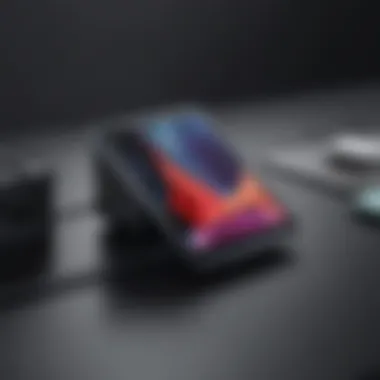
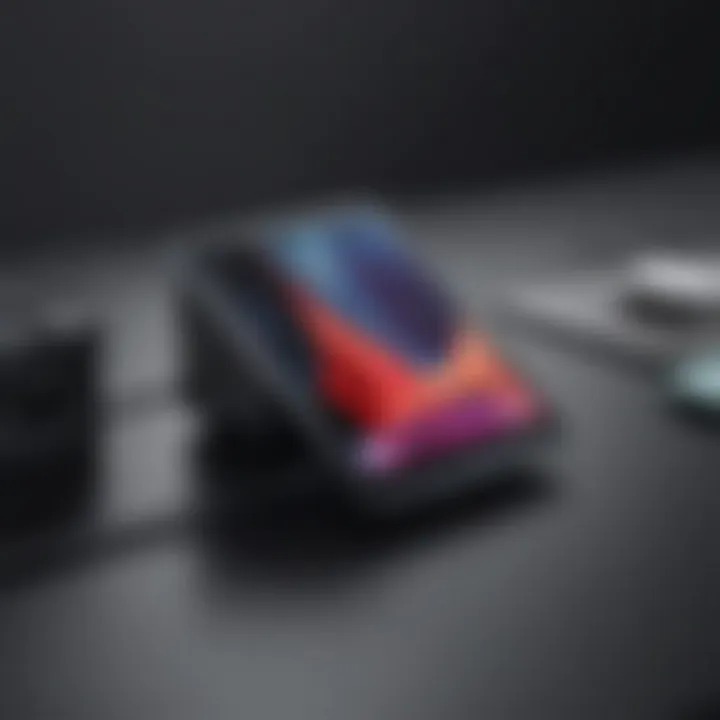
Before diving into the nitty-gritty, let’s look at the charging standards and protocols that underpin the compatibility of the iPad Air 10.9 charger with other devices. This charger conforms to universal charging standards, which largely helps with maximizing efficiency and safety while charging.
- USB Power Delivery (USB PD): This protocol enables faster charging for devices, including the iPad Air 10.9. It's a game-changer, allowing higher power levels over a single cable connection. This is particularly handy when needing to charge a device swiftly during tight schedules.
- USB-C Connection: The iPad Air 10.9 utilizes a USB-C connection, which has become the standard for many devices, enhancing interoperability across devices from various manufacturers.
- Intelligent Power Management: Many modern chargers dynamically adapt to the device they're charging. This feature ensures that your iPad or other gadgets receive power without the risk of overcharging, thereby promoting battery longevity.
Using the iPad Air 10.9 charger can be an effective way to regulate the energy demand of various gadgets, thanks to its compatibility and adherence to universal charging standards.
Furthermore, users should consider their device's charging requirements. For example, older devices may not support the full potential of newer chargers. So, while the iPad Air's charger dazzles with power, knowing the specs of what you’re charging is equally important in maintaining device health.
Comparing the iPad Air 10. Charger with Other Models
When it comes to making informed choices about charging solutions, comparing the iPad Air 10.9 charger with other models proves essential. With the diverse range of options out there, understanding the nuances can steer users clear of confusion and missteps. As technology advances, so does the variety in charging methods, materials, and efficiencies. This section highlights why these comparisons matter and what factors are crucial to consider.
iPhone Chargers vs. iPad Chargers
The differences between iPhone chargers and the iPad Air 10.9 charger are more profound than merely aesthetics or brand differentiation. Both chargers are part of the Apple ecosystem but they serve distinct functions suited to their respective devices. Here are some key points to consider:
- Power Output: The iPad Air 10.9 charger typically has higher wattage. A common charger for the iPad is rated at 20W, while standard iPhone chargers may be around 5W to 15W. This distinction is vital because using an underpowered charger for the iPad can result in slower charging times.
- Compatibility: While the iPad can technically be charged with an iPhone charger, it may not utilize its full potential. Chargers designed specifically for the iPad ensure efficient charging without overheating, which may occur if you’re pushing an iPhone charger beyond its limits.
- Port Type: The latest generation of iPhones and the iPad Air 10.9 utilize USB-C, making them easier to exchange charging cables. However, earlier models still depended on older charging methods, making it tricky if you’re swapping chargers regularly.
Third-Party Chargers: Pros and Cons
When evaluating third-party chargers, it’s crucial to look at their advantages and possible disadvantages. Not all chargers are created equal, and this can significantly impact the charging experience. Here’s a breakdown:
- Pros:
- Cons:
- Cost-Effectiveness: Many third-party options come at a lower price point, making them appealing on a budget.
- Variety of Designs: There’s a plethora of designs available, allowing users to choose chargers that fit their personal style or specific needs.
- Portable Options: Some third-party manufacturers focus on ultra-lightweight and compact designs, perfect for users on the go.
- Quality Control: A major disadvantage can be inconsistency in manufacturing quality. Some chargers may not meet safety standards, which could potentially harm devices over time.
- Warranty Issues: Using non-official chargers may void warranties or support options from Apple, should anything go awry.
- Charging Speed: Often, third-party chargers can’t match the efficiency of genuine Apple products, leading to longer charging times, which might frustrate heavy users.
User Considerations and Best Practices
Understanding how to optimize the use of the iPad Air 10.9 charger involves more than simply plugging in the device. Effective usage hinges on various user considerations and best practices. These practices not only improve charging efficiency but also extend the longevity of both the charger and the iPad's battery. Every user stands to gain from understanding their charging habits and environment. By delving into this topic, readers can ensure that their devices perform optimally while avoiding common pitfalls that can lead to premature hardware failures.
Choosing the Right Environment for Charging
Creating the ideal environment for charging is twofold. First, it revolves around physical conditions such as temperature and moisture levels. A comfortable charging environment shouldn’t be too hot or too cold. Ideal temperature range for charging typically sits between 0°C and 35°C (32°F to 95°F). Placing your charger near air vents, heaters, or in direct sunlight should be avoided as this could cause overheating.
Additionally, minimizing exposure to dust and moisture ensures that the charger and device maintain a clean connection. Here are some practical tips:
- Use a flat, stable surface when charging your device.
- Avoid charging in humid areas, like bathrooms or near water.
- Keep the charger and cable clean from dust and debris.
By attending to these elements, users can significantly improve charging efficiency and device safety.
Preventing Overheating during Charging
Overheating is not just an inconvenience; it can damage your charger and the iPad. The iPad Air 10.9 has safeguards to prevent overheating, but users can take additional steps to minimize heat production.
Here’s how to prevent overheating during the charging process:
- Remove cases while charging, especially if they insulate heat.
- Avoid heavy usage during charging. Tasks that require high processing power, like gaming or video editing, can increase heat output.
- Charge in a well-ventilated area to ensure proper air circulation around the charger and device.
A good rule of thumb is to check the device periodically. If it feels unusually warm, consider pausing the charging or moving it to a cooler location.
Managing Battery Health Effectively
To keep your iPad's battery in tip-top shape, it’s essential to practice good battery management. Users often overlook battery maintenance, which can result in reduced performance over time. Here are some strategies:
- Charge between 20% and 80% whenever possible. Avoid letting the battery fully die or staying at 100% for extended periods.
- Consider using battery optimization features the iPad offers. Tools like the battery health settings can help manage charging habits.
- Don’t use unofficial chargers. These can disrupt the battery's charge cycle and may harm its overall health.
By integrating these practices into daily use, users can preserve their iPad's battery life, prolonging hardware reliability and performance.
"A little maintenance goes a long way; treat your tech right, and it will treat you right in return."
Incorporating these user considerations ensures a seamless charging experience with the iPad Air 10.9, enhancing both the lifespan of your device and its performance.
Troubleshooting Common Charging Issues
Charging issues can be a major annoyance, especially when relying on your iPad Air 10.9 for various tasks. Understanding how to troubleshoot these problems not only saves you from frequent headaches but also helps prolong the lifespan of both your device and charger. By pinpointing where the problem lies, users can decide if it's time to replace their charger, fix their charging port, or even seek professional help. With the right approach, you can figure out what’s ailing your charger without losing your cool and continuing trips to the service center.
Identifying Faulty Chargers
Here’s the thing: not all chargers are created equal. When your iPad isn’t charging, it can lead to the thought that the device is faulty. But often, there’s a simple issue with the charger itself.
To identify a faulty charger, follow these steps:
- Check the charging cable: Look for frays or bends. If it seems to be wearing out, that’s a red flag.
- Inspect the plug: See if it fits snugly in the outlet. Loose connections might signal wear and tear.
- Use an alternative charger: If you have another charger handy, try plugging it in. If it works, you’ve likely found the culprit.
- Monitor charging lights: The iPad has indicators. A flashing light or no light at all may imply issues with the connection.
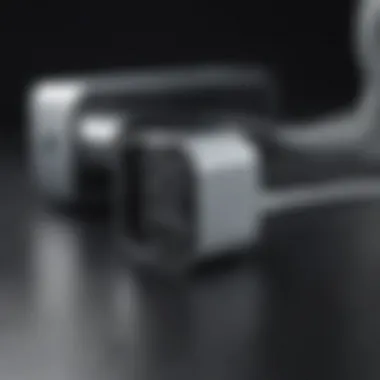

Ultimately, a charger is a small investment. Replacing a faulty one can sometimes be quicker and more cost-effective than trying to troubleshoot indefinite issues.
Resolving Charging Port Issues
Sometimes, the charger isn’t to blame. If your iPad isn’t charging, the charging port may be the problem. Dust, lint, and other debris can invade this tiny entrance, making it harder for the charger to connect. Here’s how you can tackle this:
- Inspect the port: Shine a light inside the port to check for obstructions.
- Clean carefully: If you notice dirt, use a toothpick or a soft brush to gently remove any particles. Be cautious not to damage the connectors inside.
- Seek professional help: If the port looks damaged or loose, it might be time to call in the experts of a certified service shop.
Dealing with charging port issues requires a gentle touch. Rushing this process can lead to further damage and costly repairs.
"A little care in maintenance can go a long way. It’s often the unassuming parts that lead to big problems."
In summary, identifying faulty chargers and resolving charging port issues are crucial steps in maintaining the effectiveness of your iPad Air 10.9 charging system. Remember, it's not just about charging; it’s about ensuring your device functions optimally in your daily routine.
Maintenance Tips for Longevity
When it comes to prolonging the lifespan and functionality of the iPad Air 10.9 charger, putting some thought into maintenance can yield significant benefits. Chargers are often seen just as a means to an end, but they deserve additional attention. With the right practices, users can ensure their chargers remain in prime condition, accompanying their devices on many adventures.
Proper Storage Practices
Storing your charger properly is a fundamental practice that can prevent a host of issues. A charger that’s carelessly tossed in a drawer or bag faces a higher likelihood of damage. By simply coiling the cable neatly and securing it with a Velcro strap or rubber band, it can easily avoid fraying or breaking. It’s also wise to avoid placing heavy objects on it; that pressure can lead to kinks and internal damage. Keeping your charger in a cool, dry space can also safeguard against unnecessary wear and tear. The heat can be detrimental, particularly in wraps or cases susceptible to trapping heat.
- Always store the charger in a designated spot, away from clutter.
- Avoid exposure to extreme temperatures or humidity.
- Refrain from bending the cable sharply, as that strains the internal wires.
"An ounce of prevention is worth a pound of cure." This old saying rings true, especially when considering charger maintenance, and could save you a future headache.
Cleaning and Care Instructions
Regular cleaning of your charger—not just the device itself—can keep both looking sharp. Dust and debris can accumulate on the connectors and surfaces, potentially leading to poor connections or overheating. A soft, lint-free cloth lightly dampened with water can do wonders to keep surfaces clean while avoiding damage. For stubborn spots, a gentle cleaning solution will suffice.
Special attention is needed for the charging port: use a dry toothbrush or similar tool to gently remove any lint. It's a minor detail but neglecting this can lead to connection issues down the road.
- Avoid using harsh chemicals or abrasive materials.
- Ensure the charger is unplugged before cleaning.
- Regularly check the cable for any signs of wear.
By following these cleaning and storage tips, users can significantly enhance the longevity and performance of their iPad Air 10.9 charger, ensuring it remains a reliable companion through thick and thin.
The Future of Charging Technology
The landscape of charging technology is constantly shifting, making this topic all the more significant for those who rely on devices like the iPad Air 10.9. The way we charge our devices impacts everything from user experience to environmental considerations. As we propel ourselves into a future ripe with technological advancements, a closer look at how charging solutions evolve is warranted. This section will elaborate on trends shaping charger development and potential advancements in charging techniques specifically for the iPad.
Trends in Charger Development
A plethora of factors are influencing charger development today. First, there's the push for faster charging. Users are time-strapped; often, they need reliable power sources that can keep up with their busy lives. Companies are rolling out chargers that not only charge quickly but also do so safely. This balance is critical; safety features such as temperature control mechanisms and smart technology are essential.
Next, we see a move towards universal charging solutions. The idea is to simplify the charging experience across various devices. For example, products like the USB-C have gained momentum as they can serve multiple devices, making cable management less of a headache.
Moreover, there’s a trend toward sustainability. With an increasing focus on reducing electronic waste, manufacturers are seeking to create chargers that last longer and are made from eco-friendly materials. This not only helps the planet but can also resonate well with consumer values, as users prefer brands aligned with their ethical concerns.
Some notable trends include:
- Adoption of GaN (Gallium Nitride) technology, allowing compact chargers without sacrificing performance.
- Integration of smart technology that optimizes charging speed while ensuring battery health.
- Movement towards wireless charging solutions, enhancing convenience and reducing clutter.
Potential Advancements in iPad Charging Solutions
Looking ahead, iPad charging solutions may experience noteworthy advancements that can transform user experience. MagSafe technology, once associated mainly with MacBooks, could be a game-changer for the iPad line. With this, users could attach their chargers magnetically, ensuring seamless alignment and efficient charging every time.
Another exciting possibility is the implementation of AI-driven charging systems. Imagine chargers that can adapt to the user’s habits—optimizing charging times based on when you typically use your device. Not only does this enhance battery life, but it can also provide a level of personalization that many tech enthusiasts crave.
Moreover, as the push for faster, smarter charging continues, we might see chargers that deliver dynamic power outputs. This technology would automatically adjust the charging flow based on the device's current state, potentially saving energy and improving efficiency.
“The evolution of charging technology isn’t just about speed; it’s about reimagining the entire user experience.”
So, as we step into the future, it is clear that users will benefit from advancements in charging methods tailored to modern needs. Whether it’s through innovative technology or more sustainable practices, the aim is ultimately to enhance convenience and efficiency for all iPad Air 10.9 users, making informed charging choices more relevant than ever.
The End
In wrapping up the discussion around the iPad Air 10.9 charger, it’s clear that this topic is as crucial as ever for users wanting to make informed choices. The world of chargers might seem just about power outlets and cables, but there’s a lot more that deserves attention. Ensuring that your charging setup is optimal isn’t just a matter of convenience; it's about safeguarding your device’s longevity and performance.
Summary of Key Points
To revisit the significant aspects we’ve covered:
- Design and Efficiency: The iPad Air 10.9 charger stands out with its well-thought-out design and power efficiency. It’s crafted to prevent overheating and facilitate quicker charging.
- Compatibility: Understanding that this charger is not just for the iPad Air 10.9, but could also be compatible with other Apple products is a significant takeaway.
- Maintenance: Proper care and storage can significantly impact the charger’s lifespan, making this an important factor to consider.
Recapping these points helps solidify the grounding knowledge regarding your charging equipment.
Final Thoughts on Choosing the Right Charger
Selecting the right charger goes beyond just grabbing the most convenient option at the store. It's about identifying the right blend of compatibility, efficiency, and safety. As you navigate through different options, keep in mind:
- Manufacturer Recommendations: Sticking to what Apple advises usually leads you to a solution that works harmoniously with your devices.
- Research and Reviews: Look into user experiences and expert reviews before diving into third-party alternatives. You don't want to end up with a poor-quality charger that could jeopardize your device.
- Stay Updated on Technology: As charging technology evolves, being aware of the latest advancements can open new doors for better, faster, and safer charging solutions.



